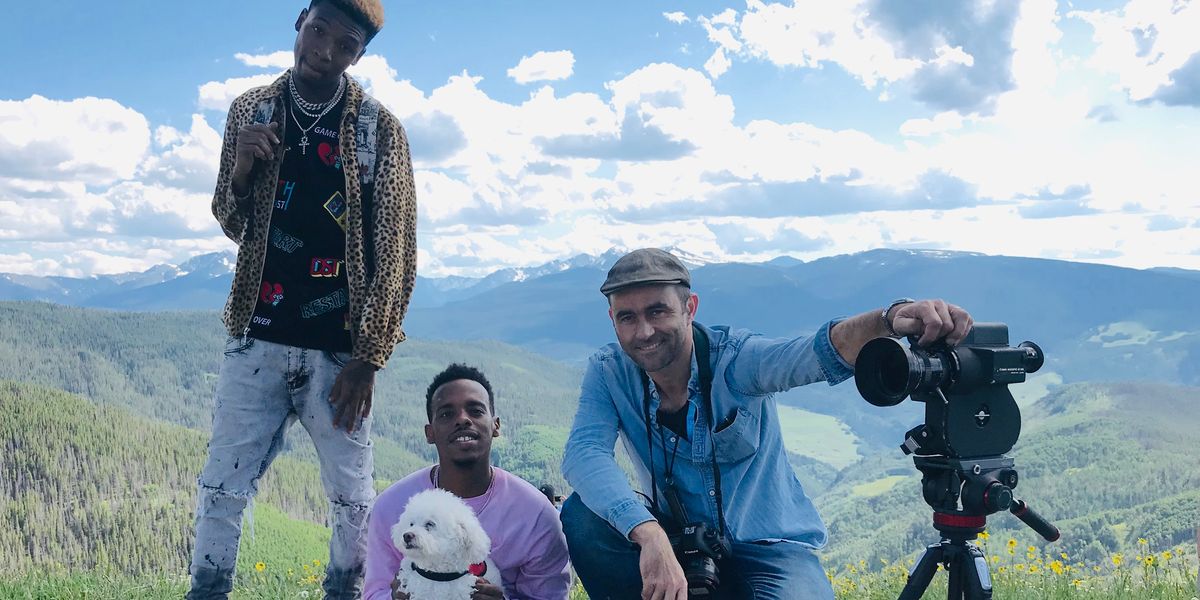“It’s Different Parts of the Brain”: Visual Artist Patrick Fraser on Photographing Versus Filming Dance
Patrick Fraser was a widely respected portrait and lifestyle photographer when he met his now-wife, ballerina Carla Körbes. Through Körbes, he discovered the visual richness of dance. Soon, he was shooting world-class dancers in promotional campaigns for Pacific Northwest Ballet and American Ballet Theatre.
Fraser also became a regular at the Vail Dance Festival, where he met jookin star Lil Buck. During last year’s festival, Fraser directed Lil Buck in a short video, “Buckin,” featuring the dancer performing with the Rocky Mountains as a backdrop while telling his life story in voiceover. The arresting film premiered a few weeks ago. Shortly afterward, Fraser chatted with us about the creative process for “Buckin,” the differences between photographing and filming dance, and what he loves about working with dance artists.
Tune in to an exclusive Zoom Q&A with Fraser and Lil Buck about the making of “Buckin” on August 20th at 6 pm Eastern.
Full details here.
How did “Buckin” come to be?
I usually make a lot of personal work at Vail with all the dancers—it’s a great opportunity to shoot some dance photography. I’d done some still photographs of Buck a couple of years back, and I thought some motion camera work of him in that setting could be beautiful, too. I’d seen a lot of nice films of Buck online, but I hadn’t really heard him talking, and I wanted to know more about his story. So I approached him and said, “Hey, would you be up to do a film and an interview?”
What was the filming process like?
I used a handheld 16-millimeter camera. There’s a lot of digital work out there that’s very slick, and that’s lovely, but I’m definitely trying to get a more authentic quality out of my work, so it feels like you’re just there, in an intimate setting. In “Buckin,” I was going for a scrapbook-slash-diary kind of feel.
We ended up shooting some scenes on the gondolas that take you up the mountain. Buck’s dancing has this sliding quality—he glides across the stage—and I thought the gondolas felt like a metaphor for that movement. And then we did some setups at the top of the mountain, which takes him out of context. He’s Memphis street, but here he is in nature, with the bird sounds—it throws you off a bit in a way that I liked.

Did the interview happen on set?
Afterward. We sat in his bedroom in his apartment in Vail, with his little dog, and just got to the bottom of it. I had a few questions jotted down, but really I just wanted to get inside why he dances, what drives him, what’s behind Buck. It was wonderful that he talked about his family. He’s totally engaged in this passion. When I left the apartment after the interview, I was like, OK: Now we have a film.
What do you enjoy about shooting dancers?
Oh, I’ve been so spoiled when it comes to dancers. I’ve had Carla to shoot—I think my first big dance campaign was for PNB, with Carla as the star. Working with dancers is so much more interesting than working with models. You get a different kind of freedom with dance. Dancers are up for everything—as long as you don’t put them on a slippery floor or wear them out. And the movement is so beautiful. In still photography, I love the challenge of capturing the decisive dance moment. When you get it, you get this lovely adrenaline: That’s the shot!
When it comes to capturing dance, how do you view the relationship between film and photography?
Film is of course a great medium for dance, and people are really pushing the boundaries on dance films. I’ve been blown away by their variety—the concepts, the lighting. But dance still needs print photography. Filmmakers are always using still references. Especially for dance, stills versus film—it’s different parts of the brain. Sometimes I’ve tried to do both film and photography on the same day, and it’s hard to toggle back and forth!
When a promotional campaign gets to the theater, everyone sees the print. The photos are literally stuck on the side of Lincoln Center. The film lives on YouTube, or the website, and many people discover it there. But it won’t find you as you’re walking around. The dance world needs both.




